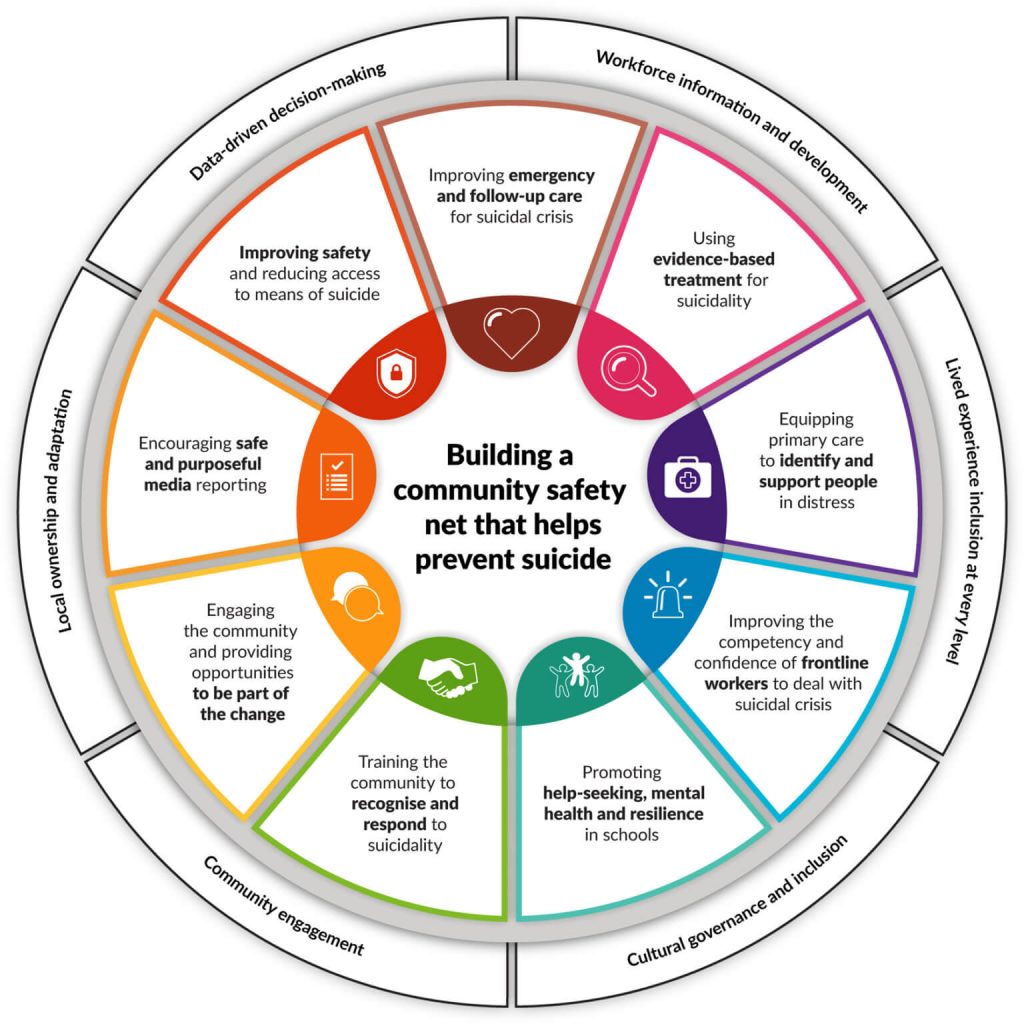Preventing suicide in our community
Suicide is the leading cause of death for people living in Australia aged 15–44 years and accounts for about one-third of deaths among people aged 15–24. Despite ongoing efforts to make suicide prevention more effective, there has been no significant or sustained reduction in the death rate from suicide over the past decade.
SEMPHN is passionate about leading and contributing to discussions around the importance of safe language in suicide prevention, working with those with lived-experience of suicide to inform suicide prevention and implementing evidence-informed approaches.
Through our work we also seek to reduce the stigma associated with suicide so that there can be a broader understanding of the risk factors for suicide.

Suicide prevention is a shared focus of the Victorian Government Department of Health and Human Services and Primary Health Networks.
By building the capacity of our community and service providers, the aim is for more people to feel confident and empowered to start conversations about suicidality so those in distress can find support and stay safe.
Lifespan Model

The LifeSpan model, developed by the Black Dog Institute is guiding SEMPHN’s work. Lifespan is an integrated approach to suicide prevention that combines nine strategies with strong evidence bases into a single model.
In 2019-20, SEMPHN committed to supporting projects focused on suicide prevention, bereavement and after care to support the sector and our community.
Jesuit Social Services (JSS) has continued to provide support across the region to those bereaved by suicide. A total of 344 people impacted by suicide and sudden loss engaged in 1081 hours of counselling. In addition, JSS used video-conferencing to provide suicide bereavement information to 236 people and supported a further 161 people bereaved by suicide through 39 support groups.
After successful trials in pilot sites, the Commonwealth Government announced an allocation of $37.6 million to roll out The Way Back Support Service nationally, with State Governments to provide matched funding. This enabled the pilot site at Casey Hospital to expand The Way Back Support Service across Casey and Dandenong hospitals.
The Way Back Support Service is a suicide prevention program developed by Beyond Blue that delivers personalised support to people who have tried to take their own lives. Evidence shows 15 to 25 per cent of those who attempt suicide will try again in the three months following discharge from hospital. The Way Back Support Service is designed to guide such people safely through this critical period.
SEMPHN and Monash Health have partnered with Beyond Blue to capitalise on incoming Hospital Outreach Post-suicidal Engagement (HOPE) trial funding and expanded The Way Back Support Service across both hospitals. Better Place Australia was successfully commissioned to deliver this service.
Suicide Prevention Place-Based Trials
The trials form part of The Victorian Suicide Prevention Framework 2016-2025 which sets a target to halve Victoria’s suicide rate by 2025. Established in 2016, the trials were initially set to run until June 2020. In 2019-2020, the Victorian Government announced that that trials would be extended for a further two years until June 2022.
SEMPHN, in partnership with the Victorian Government, is supporting communities to reduce the incidence of suicide through a coordinated place-based approach to suicide prevention across the local government area of Greater Dandenong and the Frankston Mornington Peninsula Region. In 2020-21, this work will be further expanded into Casey and Cardinia.
The Borderline Personality Disorder (BPD) Capacity Building Project trained 174 mental health professionals, including 60 GPs to help better manage patients with suspected BPD, as they are a high-risk group for suicidality and intentional self-injury. In addition, a new referral pathway and GP guidelines were developed and published by Spectrum to further improve clinical care for people with a diagnosis or suspected diagnosis of BPD.

Engaging at-risk Culturally and Linguistically Diverse community groups in Dandenong
Given the diversity in culture, ethnicity and religion in Greater Dandenong, there is a need for tailored suicide prevention activities to address the specific nuances of how mental health and suicide are understood and responded to in new or emerging communities. SEMPHN has been listening, learning and working with leaders from Culturally and Linguistically Diverse (CALD) communities to better understand how to increase people’s understanding of suicide risk and where to get support.
In 2019-20, SEMPHN continued to support Roses in the Oceanto deliver two TouchPoint workshops for the South Sudanese community in Greater Dandenong. Working in partnership with enliven, Roses in the Ocean invested extensively in the co-design process for these workshops, including meeting with community, key influencers, community gatherings, locally mobilised cultural events, researching and developing the workshops. The workshops were delivered by professional facilitators who also have a personal lived experience of suicide.
Engaging men and tradies on the Peninsula
SEMPHN commissions Hope Assistance Local Tradies (HALT) to engage people who are tradies with a higher risk of suicide. Activities have included breakfast events for tradies, promoting access to service providers, informing local providers to ensure there is capacity to provide support, and linking tradies to more training or local activities.
In 2019-20 federal funding under the Community Health and Hospitals Program (CHHP) enabled us to broaden the reach of HALT across our region.
In addition to 19 HALT events that were funded through the Place-Based Suicide Prevention Trials, another 50 events have been held to engage tradies and working-aged men, including 28 HALT breakfasts.
Since last year, six general practices and mental health clinics in 14 locations across the Frankston Mornington Peninsula region enrolled as ‘HALT-friendly’ to better assist tradies to identify clinics who can support their mental health.
For more information on HALT visit https://thehaltbrekky.com/what-is-halt/







 Preventing Suicide in our Community
Preventing Suicide in our Community